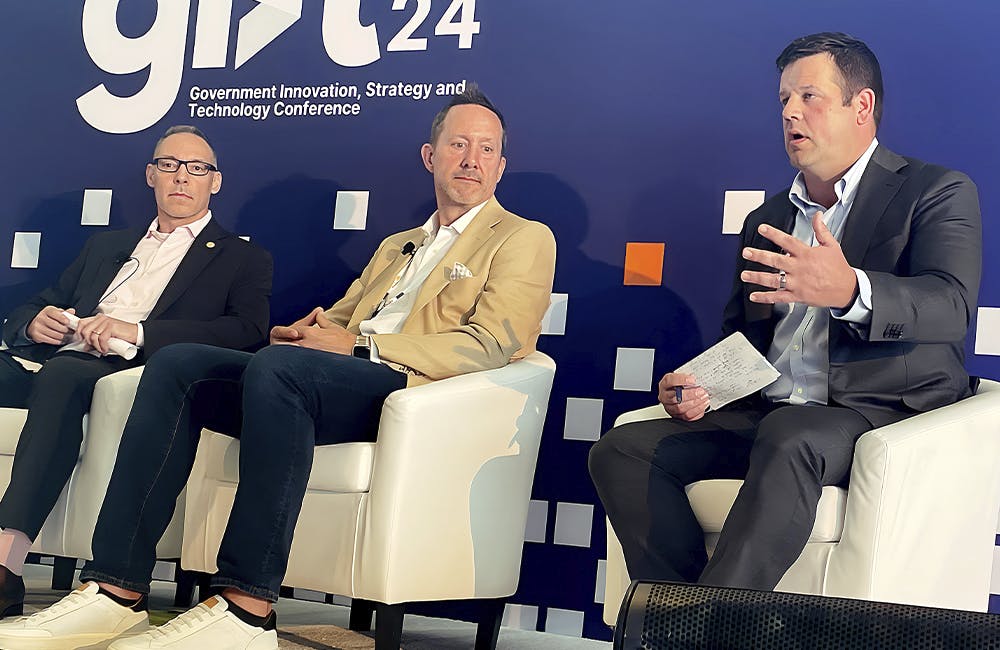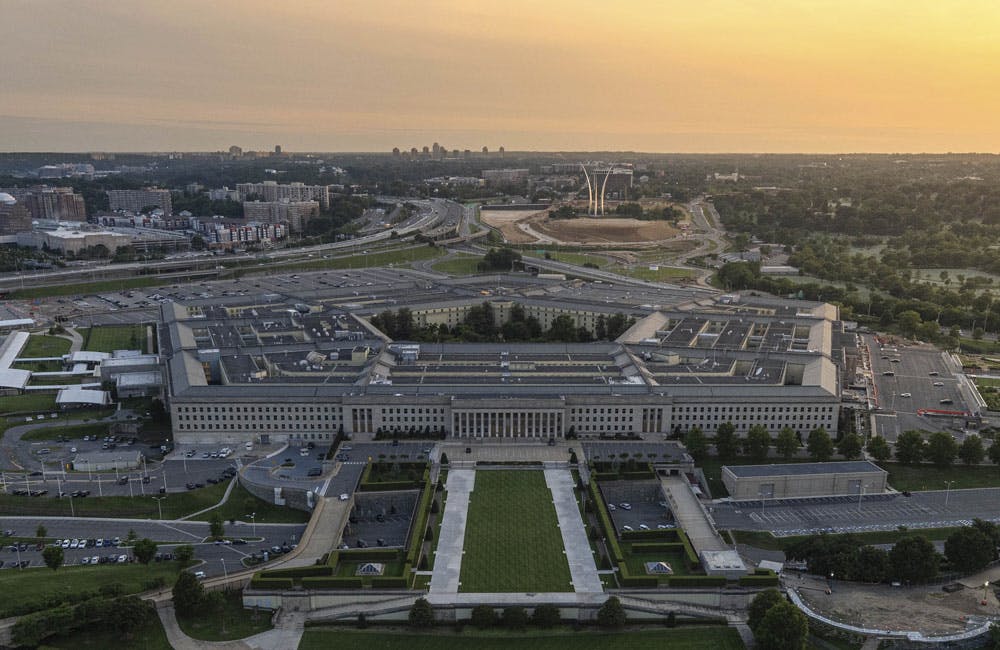Federal Human Capital Management Systems Become More Self-Serve
Leaders from the Army and VA outline how they’re modernizing their IT systems to streamline talent management.

Agencies across government are moving away from legacy-based human capital management platforms and more toward modern, integrated platforms that can better manage talent acquisition and development, employee benefits, retirement and financial management.
Especially as government competes with industry and grapples with a nation-wide demand for technical talent, modernizing HR platforms to keep up with the changing labor landscape means introducing more self-service capabilities, automated tools and improved data management.
HR Systems Need More Self-Service Capabilities
One prominent agency meeting lofty recruitment goals is the Department of Veterans Affairs, whose recent contract award for HR SMART at the Veterans Health Administration (VHA) has outlined more self-service capabilities to reduce manual labor and provide more transparency for employees.
VHA has hired over 11,000 employees since the beginning of fiscal year 2023, meeting its goal of increasing total employees within the health care system by 3%, with the total workforce resembling the highest growth rate in more than 20 years.
“We’ve got to make sure that we don’t let our foot off the gas, and we can finish the year at that growth or even higher. I have some lofty ambitions that we may even see 4% growth this year,” VHA Workforce Management Chief Officer David Perry told GovCIO Media & Research. “It does put strain in our environment, but really the strain is on the workforce, not necessarily on the IT systems. We have made a lot of investments to make sure that our IT infrastructure, availability and scalability has really improved.”
Perry said self-service capabilities are “the wave of the future,” enabling the agency’s employees to successfully access and navigate their data. When VHA initially launched its human capital management platform in 2015, it didn’t have any self-service options. Now it is working to implement more of these tools.
VHA is rolling a new system next month. Called the Talent Experience Platform (TXP), the system will introduce more robust self-service features and will take a “single-pane-of-glass approach” to increase transparency into the hiring and onboarding processes.
“We are in the midst of a transition later this year with a new contract award, [HR SMART], that will be very important for us to know what the next probably decade looks like as far as our platform, but we have developed our requirements specifically around robust self-service options,” Perry said. “We’re in the midst right now of rolling out our electronic benefits — all of that being self-service. … By August or September, we’ll know the future direction on our technology platform.”
HR SMART will take VHA to the next evolution of software, moving to a cloud-based solution with more modern technology solutions.
The agency is also targeting automation and looking into how different IT systems can “talk to each other” to reduce workforce burden.
“We are data-rich, we are not data-sophisticated,” Perry said. “That’s on slate for this year, to have a fully operational data warehouse where we can have enterprise data to have single housing of information, then to actually give access, so users can start to do analysis and aggregation of that data.
Robotic process automation (RPA) and artificial intelligence (AI) are two capabilities showing promise in the future of human capital management for the agency. Perry said these tools would support bulk processing. Currently, VHA’s entire screening process is manual.
“HR may get 800 to 900 applications that they have to then screen before a hiring manager can even get a list of candidates to look at. When you multiply that by the hiring that we’re having — I think we’ve added so far this year 1.5 to 1.7 million applications that we view,” Perry said. “To speed up that process, we need to start thinking differently. How does that look to make sure that we use the right technology? I think AI is absolutely in our future roadmap to help us with being able to screen candidates quicker.”
Army Eyes One-Stop HR Shop for Soldiers
The Army’s Integrated Personnel and Pay System (IPPS-A) Release 3 went live earlier this year, completing a phased deployment of Army human resource and talent management capabilities across active duty, Army Reserve and Army National Guard — a significant achievement for a highly complex defense business system.
The program’s go-live sequence started in November last year by placing the legacy human resource systems in a brownout state. Over the next month, the program assimilated the base data to build a record for every service member and established interfaces with 61 trading partners. By the end, the program managed to decommission 14 legacy systems.
“We still find discrepancies in the data, but our team quickly remediates the issues as they are discovered.” Col. Robert Mikesh, project manager for the IPPS-A program office, told GovCIO Media & Research.
IPPS-A, the Army’s most significant human resources modernization effort, was born out of the Defense Integrated Military Human Resources System that was never deployed. The original $159 million contract was awarded to CACI to stand up the program, and CACI subsequently won another $112.5 million contract in 2019 to continue the work on the program. Combining other contracts related to the program, IPPS-A has cost the Army over $900 million and its development has spanned almost a decade.
While the Army National Guard benefited from IPPS-A’s second release in 2020, the program rollout to active duty and reserve forces had been delayed several times.
“The original contract was awarded in 2015. At that time, the plan was to complete Increment 2 within five years. However, the scope of work proved too much to do in that timeframe, so new parameters were set for the program in 2020, focusing on deploying Release 2 to the Army National Guard. Once deployed, IPPS-A pivoted to the Release 3 deployment, which was designed, built, tested and deployed to the Army in four years,” Mikesh said.
With IPPS-A Release 3, human resources professionals gained access to the system in December of last year. All users gained access a month later, allowing all three Army components to have a unified human resource system. The platform is supposed to be a one-stop shop for soldiers for all HR-related matters, including finding their next posting to tracking their paychecks. It also allows commanders to better view readiness across their organizations.
One of the biggest priorities now is to stabilize the deployed systems.
“We continue to find defects in the software and review change requests from our functional users. In the future, we will deliver enhanced functionality and military pay. The timing for this is currently under analysis, but two of the capabilities we are looking at first are archiving and talent management,” Mikesh said.
This is a carousel with manually rotating slides. Use Next and Previous buttons to navigate or jump to a slide with the slide dots
-

How TMF is Helping Agencies Accelerate Tech Modernization
The program launched a new AI pilot to expedite TMF applications as agency leaders urge more to consider applying for funds.
4m read -

Defense Board to Pitch Solutions for Closing Tech Talent Gaps
Defense Innovation Board members cite need to modernize people management the same way government modernizes technology.
4m read -

How Agencies are Upskilling the Workforce in AI
Federal officials are putting in place new training and education methods to ensure its overall workforce understands the technology.
3m read -

A Prepared Workforce is Key to Cyber Resiliency
Strong training strategies and emphasizing cyber hygiene basics enhance security practices at federal agencies.
2m read








